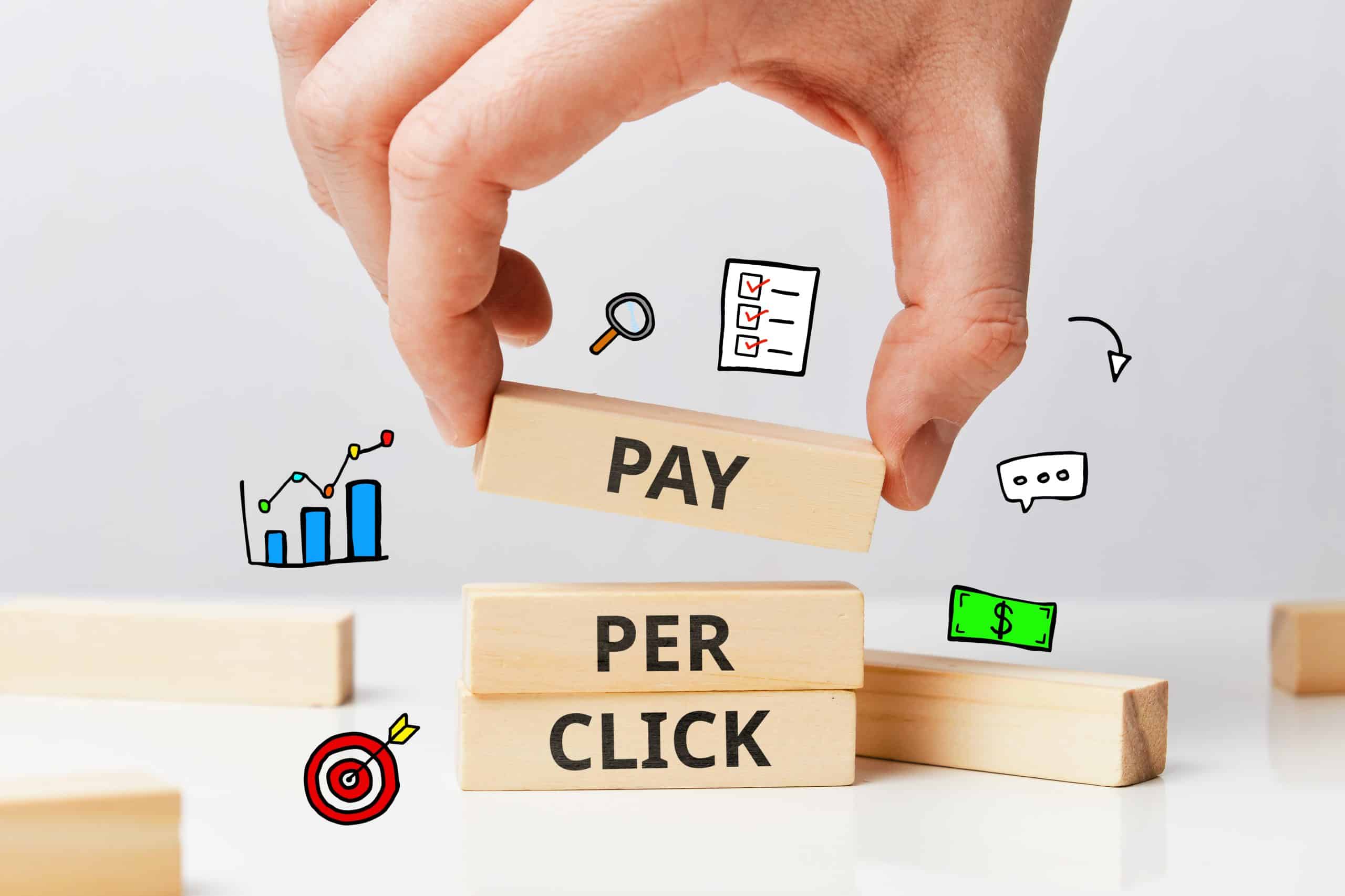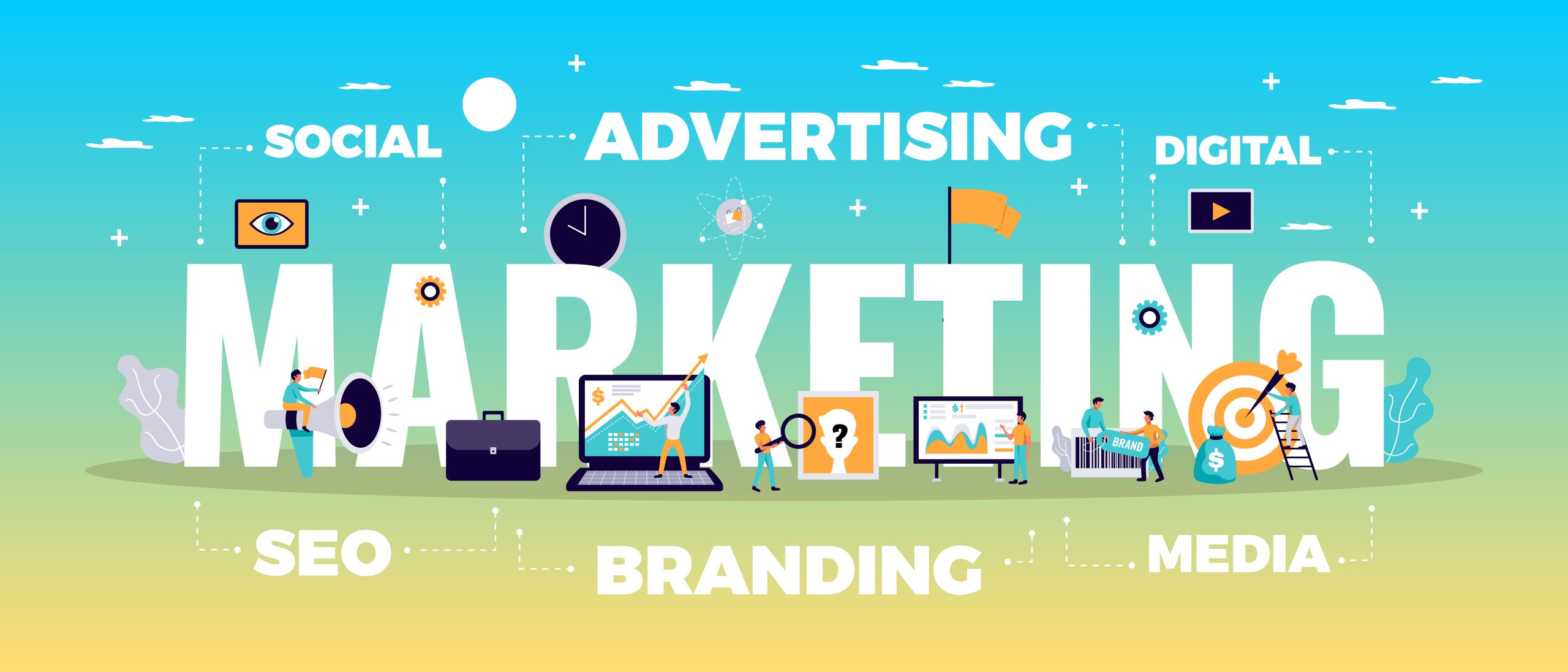
Introduction to Search Engine Marketing (SEM)
Welcome to the exciting world of search engine marketing (SEM)! In this comprehensive guide, we will delve into the depths of SEM and explore how it can revolutionize your digital marketing strategy. Whether you’re a seasoned marketer looking to enhance your skills or a newbie eager to learn the ropes, this article has got you covered.
In today’s digital age, where search engines reign supreme, mastering SEM is crucial for businesses aiming to increase their online visibility and drive targeted traffic to their websites. But before we dive into the nitty-gritty details, let’s start with an overview of what SEM entails.
At its core, SEM refers to the practice of using various techniques and strategies to improve a website’s visibility in search engine results pages (SERPs). It involves optimizing your website content through on-page SEO optimization, conducting thorough keyword research and analysis, as well as utilizing paid advertising methods like pay-per-click (PPC) campaigns.
But why is all this important? Well, consider this: when was the last time you went beyond page one of Google search results? Chances are it has been quite some time. Studies have shown that users rarely venture past those first few SERP listings when searching for information or services online. Therefore, if your website doesn’t rank highly on these pages, you risk being invisible in cyberspace!
By incorporating effective SEM strategies into your digital marketing efforts, you can ensure that your website not only appears prominently on SERPs but also reaches its target audience at the right moment—when they are actively searching for products or services related to yours.
Are you ready to unlock the secrets of successful SEM? Great! In the following sections of this guide, we will break down each aspect of SEM step by step so that by the end, you’ll have a solid understanding of how to implement it for your business. So, let’s get started. With this guide, you’ll be well on your way to mastering SEM and taking your online presence to new heights. With 3.5 billion searches happening on Google every day, can you afford not to? Arm yourself with the knowledge and tools you need to succeed in the competitive world of search engine marketing. with all the knowledge needed to conquer search engines and make them work for you! So let’s get started with understanding how search engines function and how you can leverage their algorithms to your advantage.
Understanding Search Engines
Search engines play a vital role in our everyday lives. They are the gatekeepers to the vast and ever-expanding world of information available on the internet. But have you ever wondered how search engines actually work? Let’s delve into this fascinating realm and uncover some key insights.
At its core, a search engine is a software program designed to crawl and index web pages, allowing users to find relevant information quickly. The most popular search engines, like Google, Bing, and Yahoo, use complex algorithms to analyze and rank the
At its core, a search engine is like an enormous library catalog for the internet. It scours billions of web pages, indexes them, and then retrieves relevant results when users enter specific queries. The goal is to provide users with the most accurate and useful information possible.
To accomplish this task, search engines use complex algorithms that take into account various factors such as keywords, website authority, user experience, and many others. These algorithms constantly evolve to ensure they deliver high-quality results.
One crucial aspect of understanding search engines is grasping their primary function: ranking web pages based on relevance to a user’s query. This is where SEO optimization comes into play – by optimizing your website’s content using targeted keywords, proper title tags, meta descriptions, and other techniques; you can increase your chances of appearing higher up in search engine result pages (SERPs).
Additionally, it’s important to be aware that different search engines may have slightly different ranking criteria. While Google dominates the market share with its sophisticated algorithms like PageRank, there are also other prominent players such as Bing or Yahoo!
In conclusion – wait! I’m not supposed to conclude yet! Stay tuned for more exciting insights about SEM strategies in upcoming sections!

Keyword Research and Analysis
Keywords are the building blocks of search engine marketing (SEM). They are the words or phrases that users type into search engines when looking for information, products, or services. Conducting thorough keyword research and analysis is crucial to the success of your SEM strategy.
To begin with, it’s important to understand which keywords are relevant to your business. Start by brainstorming potential keywords related to your industry, products, or services. Then, use tools like Google Keyword Planner or SEMrush to expand your list further.
Next, consider the competition for each keyword. Look at how many other websites are targeting those same keywords and assess whether you have a chance of ranking well in search engine results pages (SERPs). This will help you prioritize which keywords to focus on.
Once you’ve identified a list of potential keywords with low competition but high relevance to your business, it’s time for further analysis. Look at factors such as search volume – how frequently users search for those specific terms – and trends over time.
Additionally, pay attention to long-tail keywords – longer and more specific phrases that may have lower search volume but can attract highly targeted traffic. These often lead to better conversion rates as they indicate clearer intent from users.
Another aspect to consider during keyword analysis is user intent. Put yourself in the shoes of your target audience: What kind of information are they looking for? Are they searching with the intent to buy, or are they simply seeking information? This will help you determine which keywords are most likely to drive conversions. Overall, keyword research and analysis are crucial steps in developing an effective SEM strategy. By understanding the relevance, competition, search volume, trends, and user intent for each keyword, you can optimize your website and content to attract the right audience and increase
By understanding user intent behind different searches, you can optimize your website content accordingly and ensure it aligns with what users expect when they land on your page.
Keep in mind that keyword research is not a one-time task; it requires ongoing monitoring and adjustments based on data-driven insights. Continuously analyze performance metrics like click-through rates (CTRs) and bounce rates associated with different keywords so you can refine your strategy over time.
Keyword research and analysis is a fundamental aspect of SEM. By identifying relevant keywords, assessing
On-Page SEO Optimization
On-Page SEO Optimization is a crucial aspect of search engine marketing (SEM) that focuses on optimizing the content and structure of your website to improve its visibility in search engine results pages (SERPs). By implementing effective On-Page SEO strategies, you can enhance your website’s relevance and increase its chances of ranking higher in organic search results.
One key element of On-Page SEO optimization is ensuring that your title tags accurately describe the content on each page. Title tags are HTML elements that specify the title of a webpage and appear as clickable links in SERPs. They should be concise, descriptive, and include relevant keywords to attract both search engines and users.
Meta descriptions also play an important role in On-Page SEO optimization. These short snippets provide a summary of the webpage’s content below the title tag in SERPs. A well-crafted meta description not only entices users to click through to your site but also improves its visibility by including relevant keywords.
Another vital aspect of On-Page SEO optimization is properly structuring your URL and site architecture. URLs should be simple, readable, and contain relevant keywords whenever possible. Additionally, organizing your website into logical categories with clear navigation helps search engines understand its structure better.
Content optimization is another crucial factor for On-Page SEO success. Creating high-quality, informative, and engaging content that incorporates target keywords naturally helps establish authority and attract organic traffic. It’s essential to optimize headings, use keyword-rich anchor text for internal linking purposes, add alt text to images for accessibility as well as image optimization benefits.
Incorporating competitor analysis into your On-Page SEO strategy can provide valuable insights into what works within your industry niche. Understanding how competitors approach keyword targeting or structure their content can help inform decisions about improving your own website’s performance.
To achieve optimal results from SEM efforts requires continuous monitoring using analytics tools like Google Analytics or other third-party software which provides detailed information about user behavior, traffic sources, conversions, and more. This data provides valuable insights to refine

Off-Page SEO Optimization
Off-Page SEO Optimization plays a crucial role in improving your website’s visibility and ranking on search engine results pages (SERPs). While On-Page SEO focuses on optimizing the content and structure of your website, Off-Page SEO involves activities that happen outside of your website to enhance its reputation and authority.
One important aspect of Off-Page SEO is link building. This involves acquiring high-quality backlinks from reputable websites related to your industry. These backlinks act as votes of confidence for search engines, signaling that your website is trustworthy and relevant. However, it’s essential to focus on quality over quantity when it comes to link building, as low-quality or spammy links can actually harm your site’s rankings.
Another effective strategy for Off-Page SEO optimization is social media marketing. By creating engaging content and sharing it across various social media platforms, you can attract more visitors to your website and increase brand awareness. Additionally, social signals such as likes, shares, and comments can contribute to improved search engine rankings.
Online directories are another avenue for off-page optimization. Submitting your business information to relevant directories helps improve local SEO by ensuring that potential customers can find accurate information about your company easily.
Influencer marketing is also gaining popularity in the realm of off-page optimization. Collaborating with influencers who have a significant following in your niche can help expand brand reach and generate valuable backlinks through sponsored content or mentions.
It’s worth noting that while off-page optimization strategies are important for enhancing search engine visibility, they should always be executed ethically and within the guidelines set by search engines like Google. Engaging in black hat tactics such as buying links or participating in link schemes may result in severe penalties that could undermine all efforts made towards optimizing a website.
An effective off-page SEO strategy complements on-page optimizations by solidifying the credibility of a website through quality backlinks from authoritative sources along with increased online visibility through social media and directory listings. By implementing these tactics, you can improve your website’s
Pay-Per-Click (PPC) Advertising
Pay-Per-Click (PPC) Advertising is a powerful tool in the world of search engine marketing. It allows advertisers to bid on specific keywords and have their ads displayed prominently in search engine results pages (SERPs). This means that when someone searches for a product or service related to your business, your ad has the potential to appear right at the top.
One of the key benefits of PPC advertising is its ability to deliver immediate results. Unlike other forms of digital marketing, where it can take time to see significant traffic and conversions, PPC campaigns can start driving targeted traffic almost instantly.
Another advantage of PPC advertising is its flexibility. With PPC, you have control over your budget, allowing you to set daily spending limits and adjust bids as needed. You can also target specific geographic locations, ensuring that your ads are seen by people who are most likely to convert into customers.
To create successful PPC campaigns, thorough keyword research and analysis are crucial. By understanding what keywords your audience is using when searching for products or services like yours, you can optimize your campaign for maximum impact.
In addition to keyword research, effective ad copywriting plays a vital role in PPC success. Your titles tags and meta descriptions need to be compelling and concise while accurately reflecting what users will find on your landing page.
Furthermore, image optimization should not be overlooked; choosing visually appealing images that complement your ad text can help capture attention and drive clicks.
Ultimately, PCC advertising remains an essential component of SEM strategies.
It offers businesses the opportunity to reach their target audience directly through highly targeted advertisements.
And with careful monitoring, PPC campaigns can be optimized continuously, to ensure maximum ROI

Display Advertising: Captivating Audiences with Visual Appeal
In the vast landscape of digital marketing, display advertising holds a prominent position. It is a powerful tool that allows businesses to showcase their products or services across various websites and platforms. With eye-catching visuals and compelling copy, display ads grab the attention of users as they browse through their favorite sites.
One of the key advantages of display advertising is its ability to target specific audiences based on demographics, interests, and online behavior. By leveraging data-driven strategies, marketers can ensure that their ads are shown to those who are most likely to be interested in what they have to offer.
To maximize the effectiveness of display advertising campaigns, careful planning and optimization are crucial. This involves selecting relevant ad networks or platforms, designing visually appealing creatives with clear calls-to-action (CTAs), and constantly monitoring performance metrics such as click-through rates (CTR) and conversions.
Moreover, remarketing plays an integral role in display advertising success. By retargeting users who have previously interacted with your website or shown interest in your offerings, you can reinforce brand awareness and increase the likelihood of conversion.
In today’s competitive digital landscape where attention spans are short-lived, it is essential for businesses to leverage the power of visual storytelling through display advertising. Through strategic targeting and captivating creatives tailored for different devices and screen sizes, brands can leave a lasting impression on potential customers throughout their online journey.
So embrace the world of display advertising – let your brand shine bright amidst an ocean of information overload!
Remarketing and Conversion Optimization
Remarketing and conversion optimization are two powerful strategies that can greatly enhance the effectiveness of your search engine marketing (SEM) campaigns.
First, let’s talk about remarketing. This technique allows you to target users who have previously visited your website but didn’t convert into customers. By showing them targeted ads across various platforms, such as social media or display networks, you can remind them of your brand and persuade them to take action.
To make the most out of remarketing, it’s important to segment your audience based on their behavior on your site. For instance, you can create separate lists for those who abandoned their shopping carts versus those who viewed certain product pages. This way, you can tailor your ads and messaging specifically to each group’s interests and needs.
Now let’s move on to conversion optimization. This process involves analyzing and improving different aspects of your website or landing pages in order to increase the percentage of visitors who complete a desired action, whether it’s making a purchase or filling out a form.
One key aspect of conversion optimization is A/B testing. By creating multiple versions of a page with slight variations in design or copywriting elements, you can determine which version performs better in terms of conversions. Testing different headlines, calls-to-action, colors, layouts – every element matters when it comes to optimizing for conversions.
Another important factor is user experience (UX). Your website should be easy to navigate, load quickly, and provide clear information about products or services. User-friendly forms with minimal fields also contribute to higher conversion rates.
In conclusion,
remarketing helps re-engage potential customers while conversion optimization focuses on maximizing the chances that they will convert once back on your site.
By implementing these strategies effectively,
you can significantly improve the ROI of your SEM efforts
and drive more meaningful results for your business.
So don’t overlook remarketing and conversion optimization –
they are crucial components in mastering SEM!
Analytics and Reporting
Analytics and reporting play a crucial role in the success of any search engine marketing (SEM) campaign. By analyzing data and generating reports, marketers can gain valuable insights into their website’s performance and make informed decisions to improve its visibility on SERPs.
One of the key aspects of analytics is tracking website traffic. Using tools like Google Analytics, marketers can monitor the number of visitors, their demographics, and behavior on the site. This information helps identify patterns and trends that can be used to optimize content and target specific audience segments.
Another important aspect is measuring conversion rates. By setting up goals within analytics platforms, marketers can track how many visitors are taking desired actions such as making a purchase or filling out a contact form. This data helps identify areas for improvement in terms of user experience or call-to-action placement.
In addition to tracking overall metrics, it’s also important to analyze keyword performance. Marketers need to understand which keywords are driving organic traffic and conversions, as well as those that may need further optimization.
Reporting plays a vital role in communicating these insights effectively. Customized reports provide stakeholders with clear visuals and actionable recommendations based on data analysis.
Analytics and reporting are essential components of SEM campaigns as they enable marketers to measure success, optimize strategies, and ultimately drive better results for their businesses
Local Search Marketing
Local Search Marketing is a crucial aspect of any business’s digital marketing strategy. In today’s competitive landscape, it is essential for businesses to optimize their online presence to attract local customers and increase visibility in search engine results.
One important factor to consider in Local Search Marketing is the importance of Local SEO. This involves optimizing your website and online listings with relevant keywords, accurate contact information, and positive customer reviews. By doing so, you can improve your chances of appearing in local search results when potential customers are looking for products or services in their area.
Another key component of Local Search Marketing is ensuring that your business has consistent NAP (Name, Address, Phone Number) information across all online platforms such as Google My Business, Yelp, and social media profiles. This helps search engines understand that your business is legitimate and trustworthy.
In addition to these on-page optimizations, off-page strategies also play a role in Local Search Marketing success. Building quality backlinks from local directories or industry-specific websites can boost your website’s authority and credibility.
Furthermore, engaging with the local community through events or sponsorships can help create brand awareness and loyalty among potential customers.
Mobile SEM strategies are also vital for Local Search Marketing since more people are using smartphones to search for nearby businesses while on the go. Optimizing your website for mobile devices along with implementing location-based targeting in PPC campaigns will ensure that you reach the right audience at the right time.
Incorporating effective Local Search Marketing techniques into your digital marketing strategy will not only increase visibility but also drive targeted traffic and conversions from local customers who are actively searching for what you offer
Mobile SEM Strategies
With the increasing use of smartphones and tablets, mobile search engine marketing (SEM) has become an integral part of digital marketing strategies. To succeed in this rapidly evolving landscape, businesses must adapt their SEM strategies to effectively engage with mobile users.
One key aspect of mobile SEM is optimizing for local search. This involves ensuring that your website is optimized for local keywords and includes location-specific information. Additionally, having a presence on online directories such as Google My Business can greatly improve visibility in local search results.
Another important strategy is to ensure that your website is responsive and mobile-friendly. Mobile users expect fast-loading pages and a seamless browsing experience. Optimizing your site’s design and layout for smaller screens will not only improve user experience but also contribute to higher rankings in mobile search results.
When it comes to keyword targeting, understanding the intent behind mobile searches is crucial. Mobile users often have specific needs or are looking for immediate solutions. Tailoring your keywords to reflect these user intents can help drive more relevant traffic to your website.
In addition to organic SEO efforts, incorporating pay-per-click (PPC) advertising into your mobile SEM strategy can yield significant results. Utilizing platforms like Google AdWords allows you to target specific demographics, locations, and even timeframes when displaying ads on mobile devices.
Tracking and analyzing data from your mobile campaigns are essential for ongoing optimization. Monitoring metrics like click-through rates (CTR), conversion rates, and bounce rates will provide valuable insights into the effectiveness of your strategies and enable you to make informed decisions moving forward.
Implementing effective mobile SEM strategies requires understanding user behavior on different devices while providing them with a seamless experience tailored specifically for their needs. By utilizing techniques such as local search optimization, responsive design, targeted keyword research,
and PPC advertising along with continuous monitoring through analytics tools,
businesses can maximize their visibility in the ever-growing world of
mobile search.
Future Trends in SEM
As the digital landscape continues to evolve, so does the world of search engine marketing (SEM). Staying ahead of the game and adapting to emerging trends is crucial for businesses that want to maximize their online visibility and drive targeted traffic.
One of the key future trends in SEM is voice search optimization. With the rise of smart speakers and virtual assistants like Siri and Alexa, more people are using voice commands to perform searches. This means that optimizing your website for natural language queries will become increasingly important.
Another trend on the horizon is mobile-first indexing. As mobile devices continue to dominate internet usage, search engines like Google are prioritizing mobile-friendly websites in their rankings. Ensuring that your site is responsive and optimized for mobile devices will be essential for maintaining a strong presence in SERPs.
Artificial intelligence (AI) is also set to play a significant role in the future of SEM. Machine learning algorithms can analyze vast amounts of data, allowing marketers to gain insights into consumer behavior and optimize campaigns accordingly.
Additionally, video advertising is becoming increasingly popular as users engage more with visual content. Incorporating video ads into your SEM strategy can help capture attention and boost conversions.
Personalized marketing experiences through advanced targeting techniques are expected to become even more prevalent. By leveraging user data and implementing dynamic ad personalization, businesses can deliver tailored messages that resonate with individual customers.
In conclusion,
The future holds exciting possibilities for SEM practitioners who embrace these emerging trends. By staying informed about industry developments and incorporating innovative strategies into their campaigns, businesses can stay ahead of the competition and achieve long-term success in an ever-changing digital landscape.
Case Studies and Success Stories
Case studies and success stories are powerful tools in the world of search engine marketing (SEM). They provide real-life examples of how businesses have effectively implemented SEM strategies to achieve their goals. These stories showcase the potential of SEM and inspire others to follow suit.
One such success story is that of a small e-commerce business that saw a significant increase in website traffic and sales after implementing an SEO optimization strategy. By conducting thorough keyword research and analysis, optimizing title tags, meta descriptions, and on-page content, they were able to improve their organic search rankings and attract more qualified visitors.
Another case study highlights the impact of pay-per-click (PPC) advertising on lead generation for a B2B software company. By carefully selecting relevant keywords, creating compelling ad copy, and targeting specific audiences through Google AdWords, they were able to drive highly targeted traffic to their landing pages resulting in increased conversions.
A third example involves a local restaurant that utilized local search marketing techniques to boost visibility among potential customers in their area. By optimizing their website with location-specific keywords, claiming online business listings on platforms like Google My Business, Yelp, and TripAdvisor, as well as encouraging positive online reviews from satisfied customers; this restaurant was able to dominate local search results leading to increased foot traffic.
These case studies demonstrate the importance of SEM in digital marketing strategies across various industries. Each success story provides valuable insights into different aspects of SEM including keyword research & analysis, content optimization both on-page & off-page SEO techniques,, PPC advertising , conversion optimization,, analytics tracking & reporting ,and mobile SEM strategies .
The key takeaway here is that every business can benefit from incorporating SEM into its overall marketing strategy. Whether it’s improving organic search rankings through effective SEO or driving targeted traffic through PPC ads or focusing on local markets using local SEO tactics – there are endless possibilities for achieving success with SEM.
Stay tuned for future trends in SEM as technology continues evolving, and new opportunities arise.
Conclusion
Mastering Search Engine Marketing (SEM) is crucial for any business looking to thrive in the digital landscape. By understanding search engines, conducting thorough keyword research and analysis, optimizing on-page and off-page SEO, leveraging PPC advertising and display advertising, implementing remarketing and conversion optimization strategies, utilizing analytics and reporting tools effectively, harnessing the power of local search marketing and mobile SEM strategies, staying updated with future trends in SEM, studying case studies and success stories from industry leaders – businesses can truly take their online presence to new heights.
SEM plays a pivotal role in digital marketing as it helps businesses improve visibility on SERPs through various techniques like title tags optimization, meta descriptions creation,content optimization,image optimization ,URL structure & site architecture.
The importance of SEM cannot be overstated as it allows businesses to target specific keywords that are relevant to their products or services. This targeted approach ensures that their website appears prominently when potential customers are searching for solutions related to what they offer.
Furthermore , competitor analysis is another key aspect of mastering SEM.
It involves identifying competitors who rank highly for your target keywords .
By analyzing their websites,you can gain insights into what strategies are working well for them,and implement those tactics into your own campaigns.
In conclusion,it’s clear that having a strong understanding of SEM is vital for any business aiming to succeed online.
This comprehensive guide has covered the essential components such as keyword research,on-page SEO optimization,content creation,pay-per-click advertising,re-marketing,strategies,optimal usage of analytics tools,inclusion local search marketing,mobile-optimized approaches,future trends,and real-life case studies.
Successful implementation will help drive targeted traffic,solidify brand authority,and ultimately boost conversions.
Leveraging these techniques will allow you to navigate the ever-evolving digital landscape with confidence. So go ahead,start harnessing the power of SEM today!




